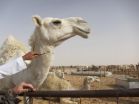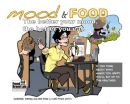(Press-News.org) Wits University scientists have debunked two big myths around climate change by proving firstly, that despite predictions, tropical storms are not increasing in number. However, they are shifting, and South Africa could be at increased risk of being directly impacted by tropical cyclones within the next 40 years. Secondly, while global warming is causing frost to be less severe, late season frost is not receding as quickly as flowering is advancing, resulting in increased frost risk which will likely begin to threaten food security.
According to Jennifer Fitchett, a PhD student in the Wits School of Geography, Archaeology and Environmental Studies (GAES), there has been an assumption that increasing sea surface temperatures caused by global warming is causing an increase in the number of tropical cyclones.
But looking at data for the south-west Indian Ocean over the past 161 years, Fitchett and co-author Professor Stefan Grab, also from GAES, confirmed the results of previous studies which have found that there has been no increase in the number of tropical cyclones and that much of the perceived change in numbers is a result of improved storm detection methods. "From 1940, there was a huge increase in observations because of aerial reconnaissance and satellite imagery," she says.
The big surprise came when Fitchett and Grab looked at where storms have been happening. As the oceans have warmed and the minimum sea surface temperature necessary for a cyclone to occur (26.5 degrees Celsius) has been moving further south, storms in the south-west Indian Ocean have been moving further south too.
Most cyclones hit Madagascar and do not continue to Mozambique, and those which hit Mozambique develop to the North of Madagascar, but in the past 66 years there have been seven storms which have developed south of Madagascar and hit Mozambique head-on. More notable is that four of them occurred in the past 20 years. "This definitely looks like the start of a trend," says Fitchett.
South Africa is already feeling the effects of this shift. The cyclones that hit southern Mozambique cause heavy rain and flooding in Limpopo. But according to Fitchett, the trend becomes even more concerning when one considers that the 26.5 degrees Celsius temperature line (isotherm) has been moving south at a rate of 0.6 degrees latitude per decade since 1850. "At current rates we could see frequent serious damage in South Africa by 2050," she says.
"This is not what we expected from climate change. We thought tropical cyclones might increase in number but we never expected them to move."
In a separate study, Fitchett and co-authors looked at different types of citrus – oranges, lemons and tangerines – in two cities in Iran, where the existence of heritage gardens meant data were easily available. They found that while global warming is causing the fruit trees to flower as much as a month earlier than 50 years ago, which is a very rapid shift, changes in late season frost are not happening nearly as quickly.
Before 1988 there were zero to three days between peak flowering and the last day of frost in Kerman, Iran; since then, the number has increased to zero to 15.
"The layman's assumption is that as temperatures get warmer, there will be less frost. But although the severity of the frost has decreased, the last day of frost hasn't been receding as quickly as the advances in flowering. The result is that frost events are increasingly taking place during flowering and damaging the flowers. No flowers equals no fruit," says Fitchett.
According to the study, at current rates, it will take only 70 years before it becomes a certainty that frost will occur during peak flowering in Kerman. Already, since 1988, frost has occurred during peak flowering in 41% of the years.
"Iran is a top citrus producer but they don't export and we don't yet have data on whether there has been an impact on their citrus yields. We think that if there hasn't already been a huge impact, there soon will be," says Fitchett.
South Africa also produces a lot of citrus – for local and international consumption – and the country has been experiencing similar climate warming to Iran. South African farmers are not yet recording the flowering dates of their crops which makes it hard to repeat the study locally, but according to Fitchett, the threat is of concern.
Fitchett and Grab's paper titled: A 66-year tropical cyclone record for south-east Africa: temporal trends in a global context was published in the International Journal of Climatology in February 2014 and evolved out of work Fitchett undertook during her honours degree at Wits.
Her second paper, co-authored with Grab, Dave Thompson (South African Environmental Observation Network) and Reza Rowshan (University of Golestan, Iran), titled: Increasing frost risk associated with advanced citrus flowering dates in Kerman and Shiraz, Iran: 1960–2010, was published in the International Journal of Biometeorology in January 2014 and evolved out of work she did during her masters degree at Wits.
According to Grab, who supervised Fitchett's research, there are many questionable reports by scientists, governments and the media on climate change. "We are on a quest to test and challenge such reporting, based on the analysis of quality data available to us. The work of Fitchett and other postgraduate students at Wits University is of the highest international quality and bodes well to a future generation of South African climate and environmental change scientists."
INFORMATION: END
SA scientists debunk climate change myths
2014-02-25
ELSE PRESS RELEASES FROM THIS DATE:
Can babies learn to read? No, NYU study finds
2014-02-25
Can babies learn to read? While parents use DVDs and other media in an attempt to teach their infants to read, these tools don't instill reading skills in babies, a study by researchers at New York University's Steinhardt School of Culture, Education, and Human Development has found.
"While we cannot say with full assurance that infants at this age cannot learn printed words, our results make clear they did not learn printed words from the baby media product that was tested," says Susan Neuman, a professor in NYU Steinhardt's Department of Teaching and Learning and the ...
Carbon dating uncovers forged Cubist painting
2014-02-25
Choosing the right physical technique to analyse paintings can make all the difference when it comes to ascertaining their authenticity. Now, a painting initially attributed as belonging to a series called 'Contraste de formes' by French Cubist painter Fernand Léger has definitely been identified as a forgery. This is the first time it has been possible to identify a fake painting by relying on the anomalous behaviour of the concentration of the radioactive form of carbon (14C) in the atmosphere after 1955 to date the canvas. These findings were recently published in EPJ ...
Study finds 2 biodegradable mulches to be suitable polyethylene alternatives
2014-02-25
MOUNT VERNON, WA--Polyethylene plastic mulch offers a range of benefits and has become standard for growers of a variety of agricultural and horticultural crops. Despite the recognized benefits, the plastic mulches have serious drawbacks. For example, plastic mulches can typically be used for only one cropping season, after which they must be removed and disposed of, creating expensive and time-consuming processes for growers. The challenges and costs associated with recycling mean that plastic mulches often end up in landfills, buried, or burned on-site--practices that ...
Scientists demonstrate first contagious airborne WiFi virus
2014-02-25
Researchers at the University of Liverpool have shown for the first time that WiFi networks can be infected with a virus that can move through densely populated areas as efficiently as the common cold spreads between humans.
The team designed and simulated an attack by a virus, called "Chameleon", and found that not only could it spread quickly between homes and businesses, but it was able to avoid detection and identify the points at which WiFi access is least protected by encryption and passwords.
Researchers from the University's School of Computer Science and Electrical ...
Study uncovers why almost winning is just as good for some gamblers
2014-02-25
A new study led by the University of Exeter and Swansea University has pinpointed the changes in the brain that lead gamblers to react in the same way to near-misses as they do to winning.
The research shows that near-misses are underpinned by increases in the brain's electrical activity, particularly in the theta frequency range - known to be involved in processing win and loss outcomes.
They found that these increases in theta are linked to both how severe someone's gambling history is and how susceptible they might be to developing a future gambling problem.
Popular ...
Saudi Arabian camels carry MERS virus
2014-02-25
An estimated three-quarters of camels recently surveyed in Saudi Arabia have evidence of infection with the Middle East Respiratory Syndrome coronavirus (MERS-CoV), the virus responsible for human cases of MERS. Results of the new study establish for the first time that direct camel-to-human transmission is possible and provide a pathway to control the spread of the disease.
Results in the journal mBio are reported by scientists at the Center for Infection and Immunity at Columbia University's Mailman School of Public Health; Mammals Research Chair, King Saud University, ...
Novel optical fibers transmit high-quality images
2014-02-25
MILWAUKEE – After having recently discovered a new way to propagate multiple beams of light through a single strand of optical fiber, engineers at the University of Wisconsin-Milwaukee (UWM) now have found that their novel fiber architecture can transmit images with a quality that is comparable or better than the current commercial endoscopy imaging fibers.
Because of this, the work has potential not only in next-generation high-speed communication, but also biomedical imaging.
The work is published today in the journal Nature Communications.
In conventional optical ...
Mood and food: The better your mood, the better you eat
2014-02-25
Previous research has found that emotions affect eating, and that negative moods and positive moods may actually lead to preferences for different kinds of foods. For example, if given the choice between grapes or chocolate candies, someone in a good mood may choose the former while someone in a bad mood may choose the latter. The research reported in this article looks at the "why:" Why, when someone is in a bad mood, will they choose to eat junk food and why, when someone is in a good mood, will they make healthier food choices?
To get at the "why," we married the ...
Use of acetaminophen during pregnancy linked to ADHD in children, UCLA researchers say
2014-02-25
Acetaminophen, found in over-the-counter products such as Excedrin and Tylenol, provides many people with relief from headaches and sore muscles. When used appropriately, it is considered mostly harmless. Over recent decades, the drug, which has been marketed since the 1950s, has become the medication most commonly used by pregnant women for fevers and pain.
Now, a long-term study by UCLA, in collaboration with the University of Aarhus in Denmark, has raised concerns about the use of acetaminophen during pregnancy.
In a report in the current online edition of ...
Building a better mouse model to understand pancreatic cancer
2014-02-25
(SALT LAKE CITY)—Cancer of the pancreas is usually not detected until it's too late to cure. But precursor lesions that form in the pancreas and its ducts can signal the disease before it strikes, and when caught early enough, they can be prevented from progressing to become cancer.
In a new study, researchers led by a molecular biologist at the University of California, San Francisco (UCSF), report two breakthroughs in understanding those lesions and their role in pancreatic cancer: the development of the first mouse model that simulates a precursor lesion called intraductal ...




